Good morning friends, and welcome back to the Mirror Gallery here on Hipsters of the Coast. Today we’ll be returning to a series that’s had two previous iterations, to look at the latest artworks in the Dragons in Art Series by Dragon Shield!
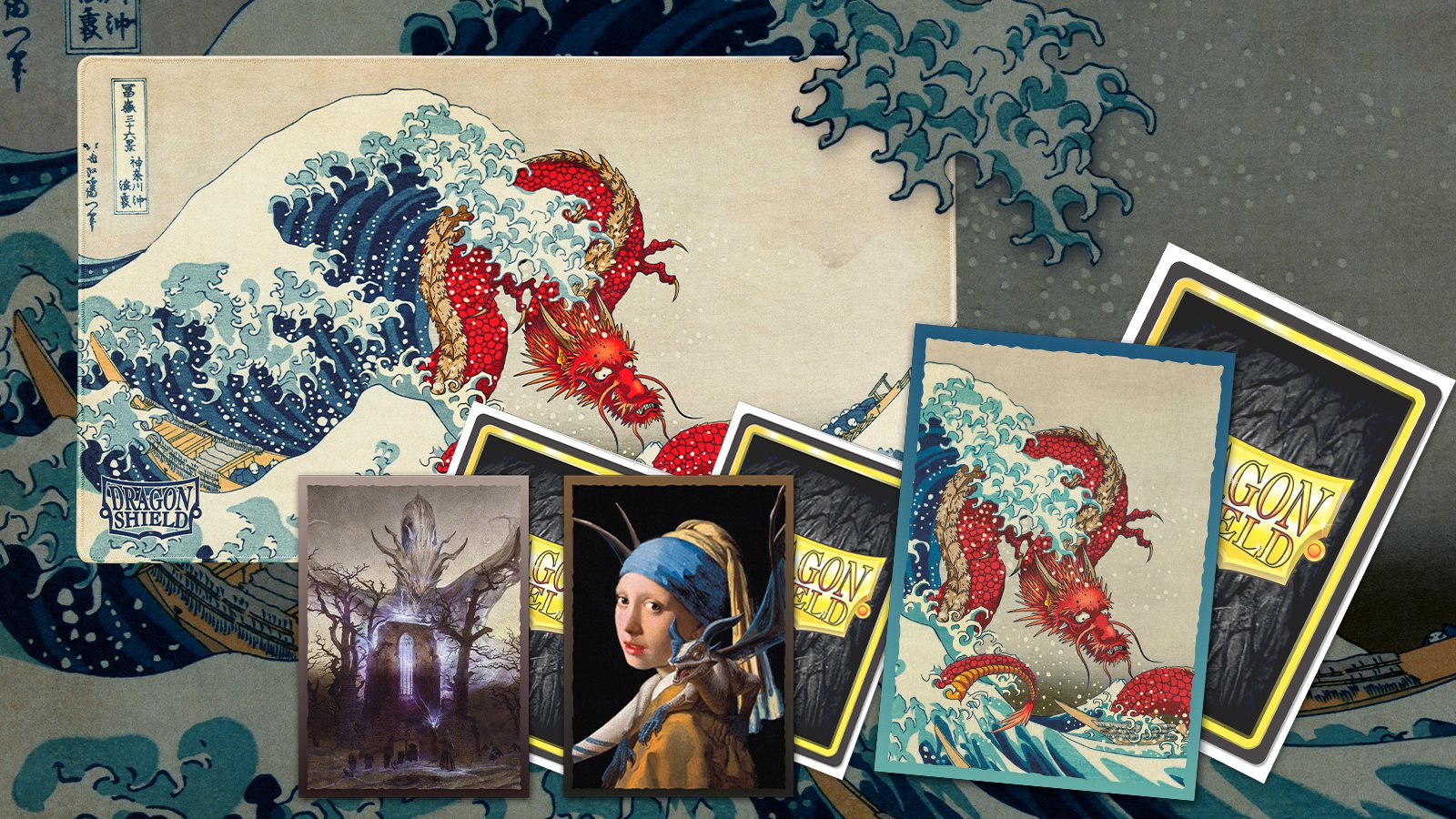
Back in 2019, Dragon Shield launched a set of sleeves that featured dragonized versions of famous artworks. I fell in love with them, and I wrote a piece about those masterworks, using the contemporized versions as a point of departure for learning about the original works these sleeves were drawn from. I returned to the series last year with Volume 2, which featured the next three pieces in the series. And now in 2021 I’m back a third time to take a look at the most recent wave of dragonized artworks that was released late last year.
As I’ve mentioned in the last two articles, this series will not talk about copyright, derivative works, and the legal and ethical implications that come from creating one piece of art out of another; it’s just not what I do. But what we will talk about is some of the history behind these three works, their artists, and why they’re important to the world of art. You may have already seen some of these sleeves on LGS shelves or across the table, but if not, you’re in for a treat. This is Dragon Shield Art Sleeves, Volume 3.
Girl with a Pearl Earring by Johannes Vermeer
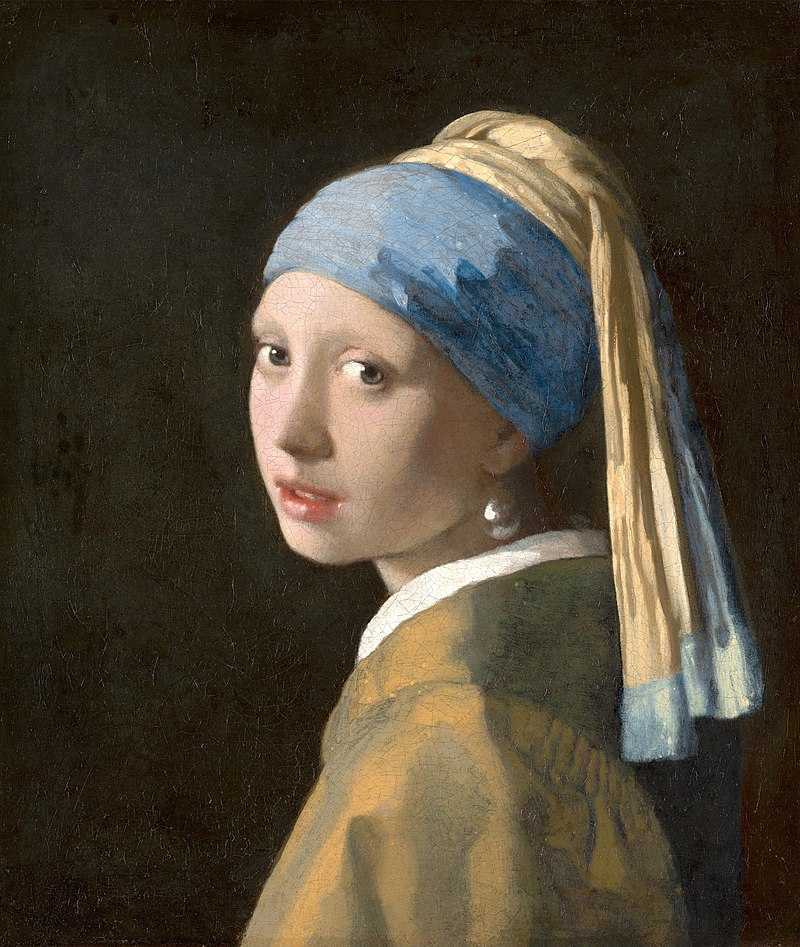
Girl with a Pearl Earring (1665) by Johannes Vermeer (Delft 1632 – 1675 Delft), oil on canvas, 39 by 44.5 cm. Collection of The Mauritshuis, The Hague, Netherlands.
Girl with a Pearl Earring by Johannes Vermeer is a 17th Century Dutch tronie, the word being Dutch for face and the name given to paintings of the period that depict exaggerated expressions and shoulder-up portraits of subjects in costume. Vermeer’s work is perhaps the most well known of the entire genre, and as such has been the subject of countless poems, books, historical fictions, and movies. The work has resided in The Mauritshuis in The Hague, Netherlands since 1902; outside of traveling exhibitions, it has stayed in Dutch hands since its creation.
We know almost nothing about the sitter, and yet that seems to add to the painting’s allure and drive its popularity. Recent restoration work and study have revealed such things as eyelashes that have since faded, and a green curtain that once hung behind the figure which is now mottled and indiscernible without X-ray and microscope technology. This Vermeer is instantly recognizable, and it’s no surprise it was the title work of these latest dragonizations.
Dragon Shield artist José Muñoz has added a different sort of accoutrement to this masterwork; where an earring once hung a dragon now sits perched, almost smiling, mimicking the expression of our leading lady. It’s wonderfully expressive, and makes for a light and fanciful reimagining that makes you look twice, just as you do to the original.
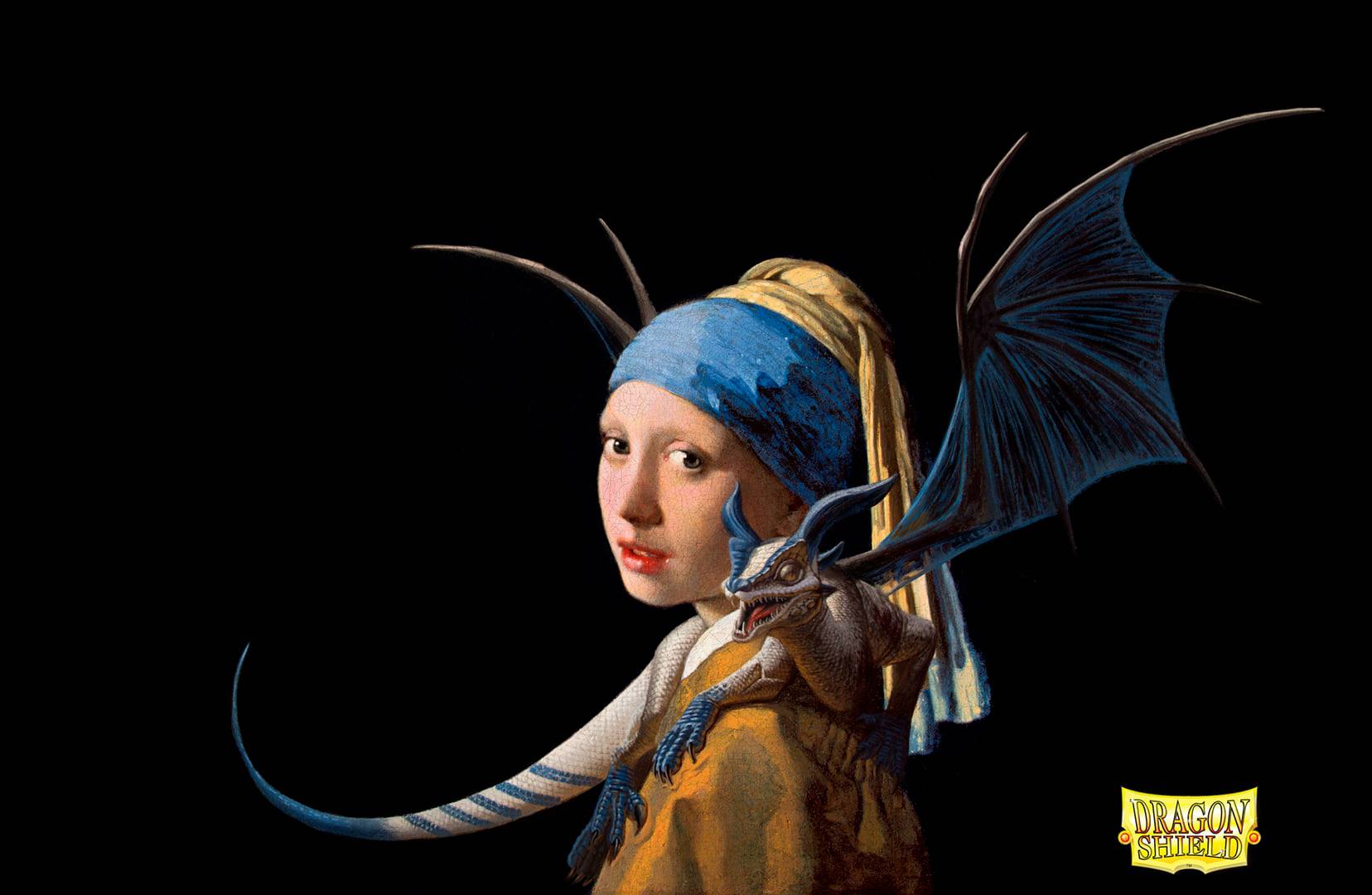
Dragonized Girl with a Pearl Earring by José Muñoz. Digital.
The Abbey in the Oakwood by Casper David Freidrich
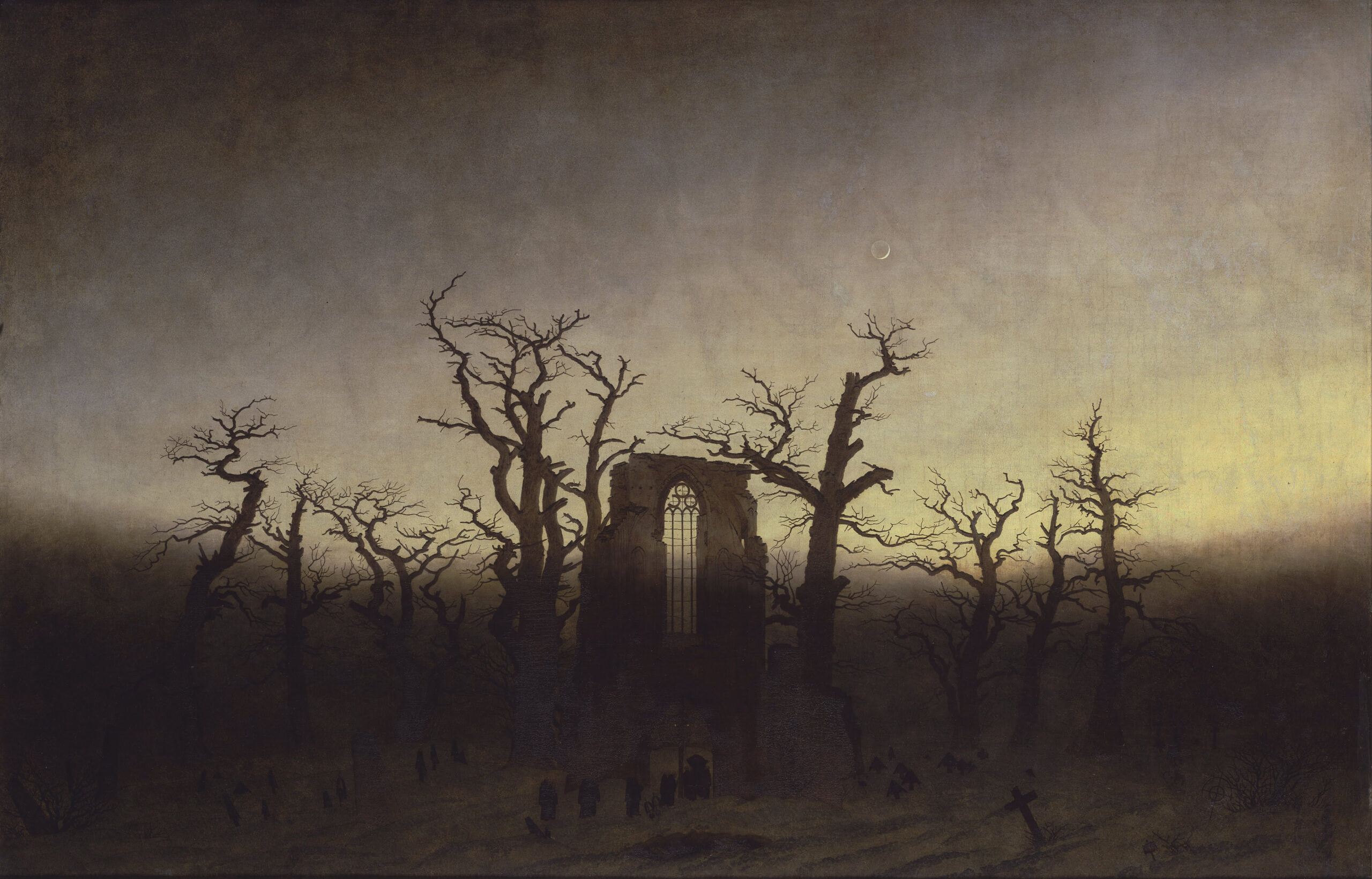
The Abbey in the Oakwood [Abtei im Eichwald] (Dresden, 1809-1810) by Casper David Freidrich, oil on canvas, 110 cm by 171 cm (43.3 in by 67.3 in). Collection of The Alte Nationalgalerie, Berlin.
The Abbey in the Oakwood was painted at the height of his career and originally hung alongside Friedrich’s The Monk by the Sea when first exhibited in 1910, before moving to the collection of King Wilhelm III and then the Alte Nationalgalerie in Berlin. The painting is romantic allegory at its best: shadowy figures in the foreground carry a coffin through the foreboding archway, mimicking the very passage of time. As the moon waxes above and day turns to dusk, we see an open grave, but a few candles, and an overwhelming mood of solitude. Not of fear, but of peace.
The Abbey we find in 2021 is quite different from this painting of 200 years ago, and has a new resident, courtesy of artist Daniel Kamarudin. What was once a story of life and death is now a battle between life and death, as clerics and men of mystery sling spells towards the dragon beyond the Abbey. This is probably the heaviest derivation we’ve seen from Dragon Shield, as it changes the entire mood of the original work, and yet a new story unfolds.
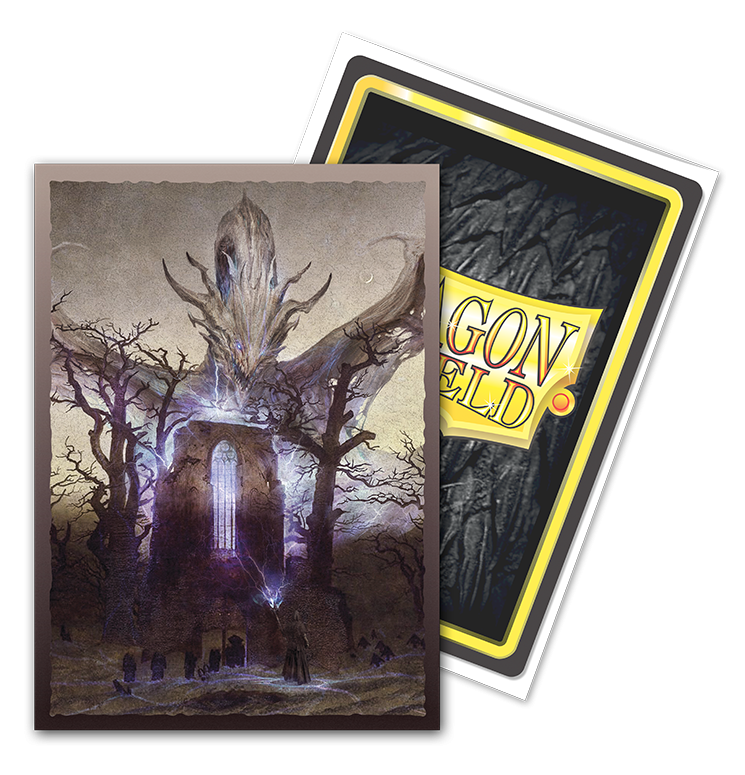
Dragonized Abbey in the Oakwood by Daniel Kamarudin. Digital.
The Great Wave off Kanagawa by Hokusai
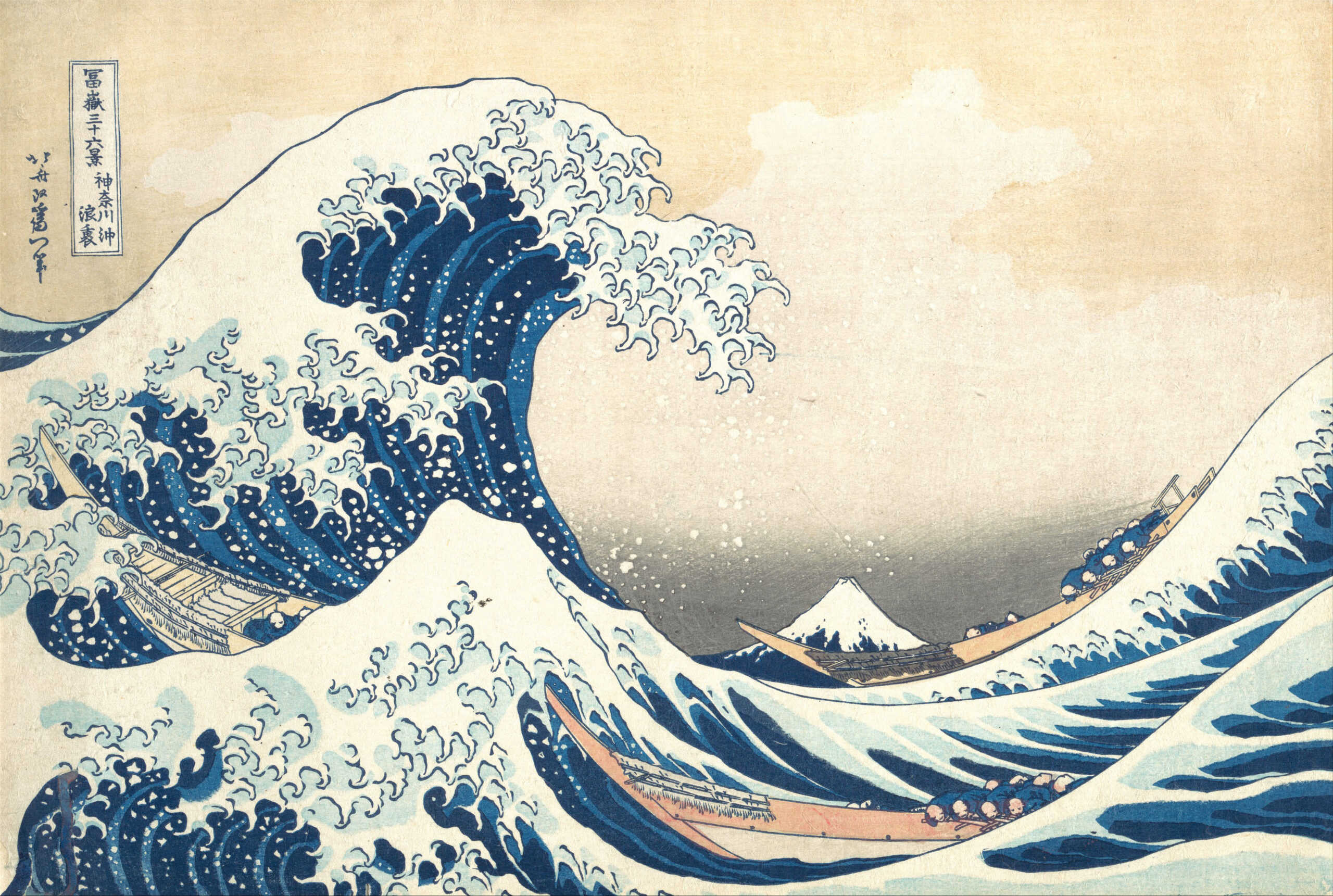
The Great Wave off Kanagawa (1829-1833) by Katsushika Hokusai, color woodblock, 25.7 cm by 37.8 cm (10.1 in by 14.9 in). Example from the Metropolitan Museum of Art, New York.
What is thought to be Hokusai’s greatest work, and one of the most recognizable pieces of Japanese art in the world, The Great Wave off Kanagawa is a woodblock print in the traditional Japanese ukiyo-e style. It is the first work in the artist’s larger body of prints entitled Thirty-six Views of Mount Fuji, and copies of the print from the period reside in major museum collections around the globe, for example the Metropolitan Museum of Art in New York.
The Great Wave has been used as the base for thousands of derivative artworks, from Cookie Monster to Pokemon. Lists have been made of its best appropriations. It also has functioned as brilliant artistic inspiration within Magic itself, perhaps most notably in Steven Belledin’s Rampant Growth and in the background of several others.
Sabine van Apeldoorn has transformed this work once more with the Form of the Dragon, as a great Japanese Sea-Dragon winds with way through the crashing wave to become a part of the roil itself. This piece now takes its place in a long line of transformative reproductions, and also as a playmat if you’re so inclined.
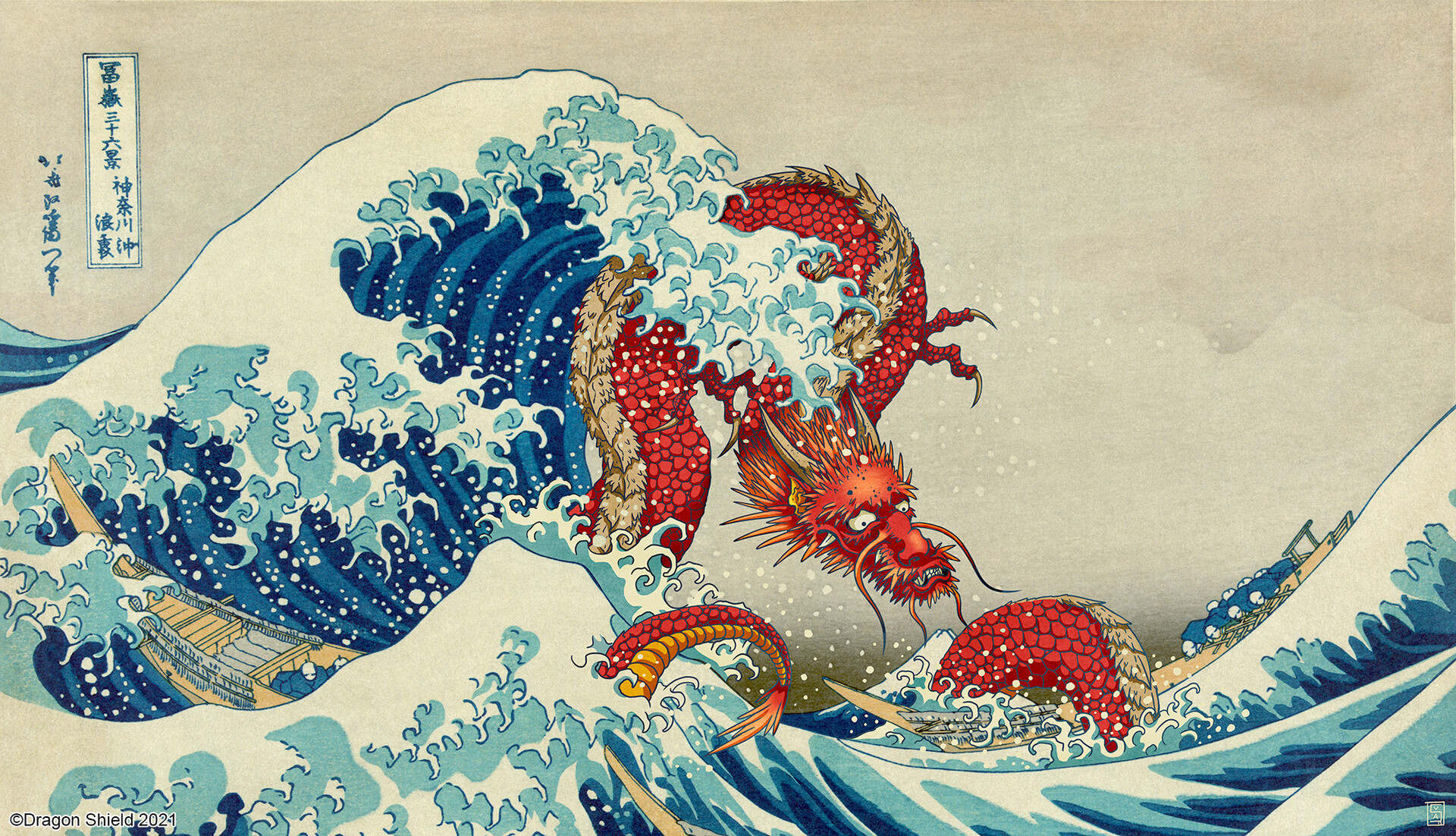
Dragonized Great Wave by Sabine van Apeldoorn. Digital.
Wrapping Up
These impromptu art history lessons are some of my favorite historical explorations I get to do in this column. Dragon Shield has once again chosen inquisitive and immersive paintings to add to this ever popular line; whether you’ve seen the paintings before or know nothing about them, you’ve now been armed with some fun factoids to fire across the table during your next game of Commander. I’m not sure when we might see Volume 4, but I would imagine this won’t be the end of the Dragons in Art series by Dragon Shield. And you can bet that once they hit store shelves, we’ll return for a bit more art history right here on Hipsters of the Coast.
We’ve got a few weeks before it’s time to dive into Kamigawa: Neon Dynasty, so look for a bit of variety in the next couple of Mirror Gallery articles. Artist Proofs? I think so. Abstract Expressionism? Maybe! Collaboration? Hopefully?! There might just be some of all three!
Remember, to see original #mtgart and other #vorthos related things, follow me on Twitter. Feel free to ask questions or retweet to continue the conversation. Thanks and see you next time!
Donny Caltrider has been playing Magic since 2002 and collecting original Magic art since 2017. He has an M.A. in Museum Studies from Johns Hopkins University and enjoys telling stories about art, objects, and the intersection of fantasy with real-life. You can find him on Twitter talking about #mtgart, museums, and other #vorthos related goodness. Follow along and continue the conversation!

